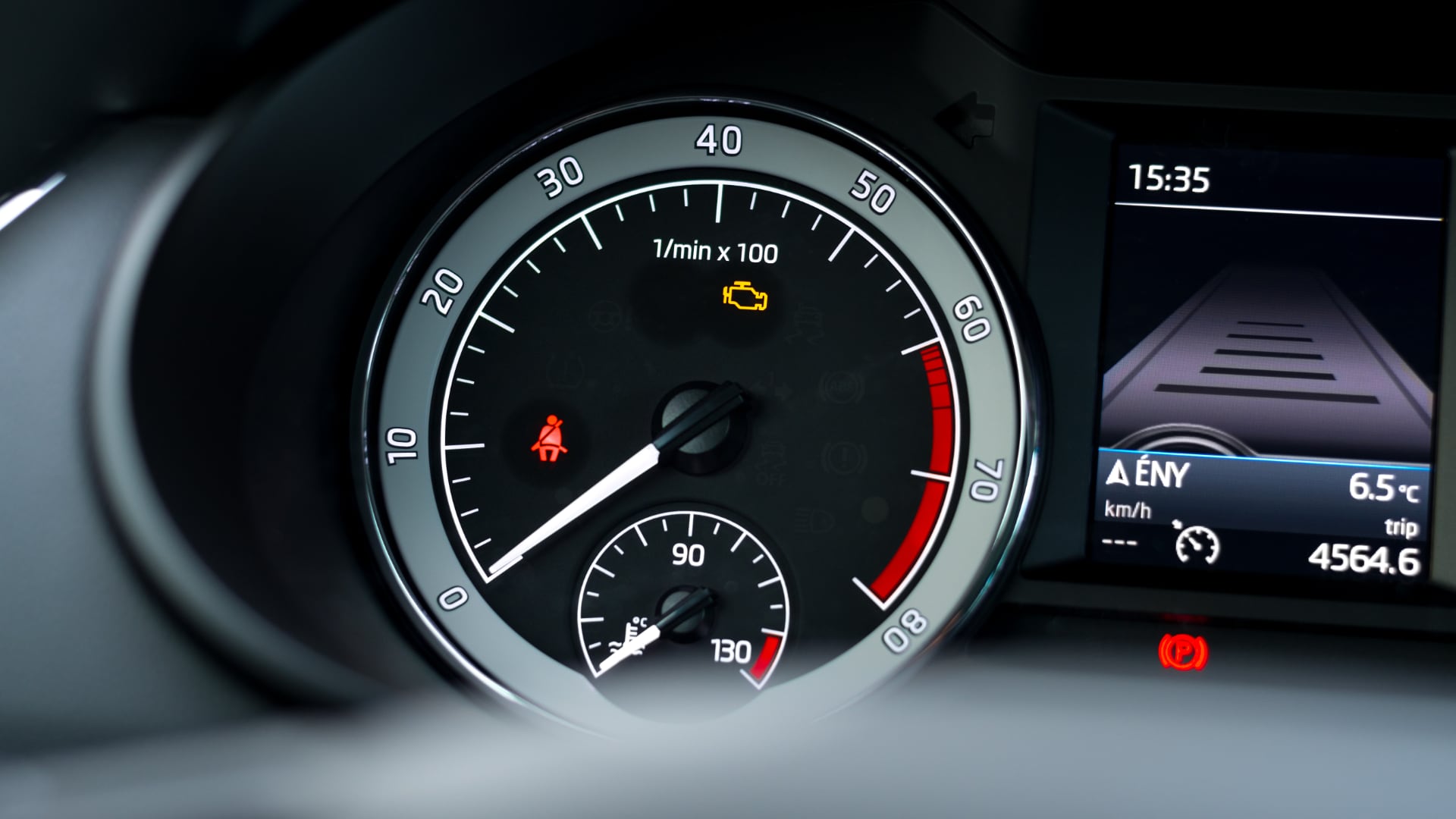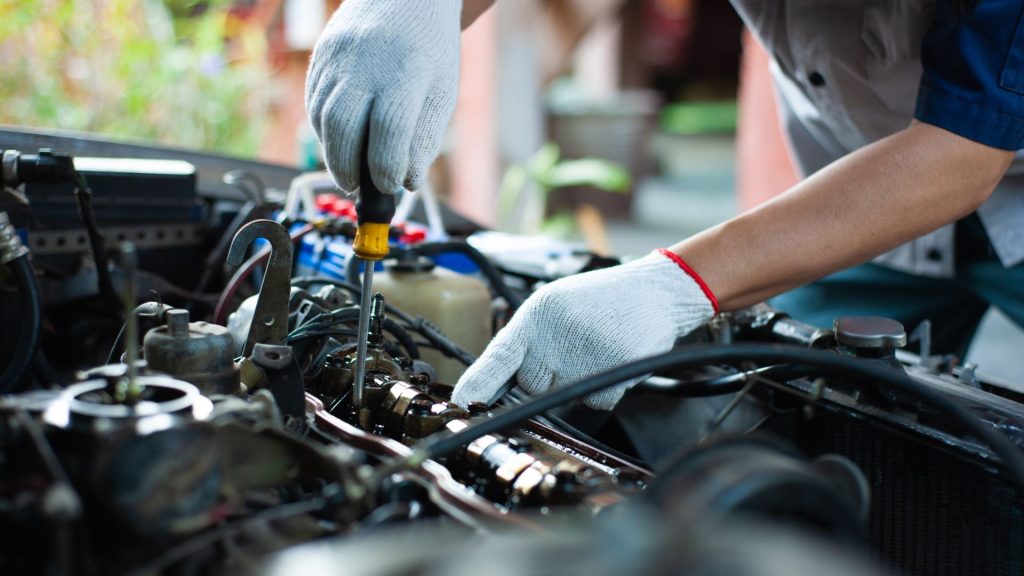Can you drive with check engine light on?
Understand the potential risks of driving with an activated check engine light.

Modern vehicles are equipped with dashboards full of warning lights. Some warning lights, like the check engine light, are informative; some indicate that you are facing normal faults, and some means you must stop the ride immediately. Please pay attention to the dashboard lamps since they give essential information about the car’s status.
The check engine light is equipped with your vehicle’s onboard diagnostics system. It is designed to illuminate whenever something goes wrong within its complex collection of components and sensors. Faults in the electronic control system get stored in “a trouble code” to identify the source of the issue.
A diagnostic computer or an electronic scan tool is used to indicate the issue, which a professional technician mechanically addresses. In this article, we will give insights on the question, ‘can you drive with the check engine light on?’
How does the check engine light operate?
The check engine light flickers when the OnBoard Diagnostics or the OBD of the vehicle’s computer has detected something with the engine. The ECU, also known as the Engine Control Unit, monitors other components of the car and it detects problems in all locations. When the engine control unit detects a problem, it alarms the driver through the check engine light.
Check engine lights are made to let drivers know when there is something wrong and let them decide the next step accordingly. It also assists technicians or mechanics in pinpointing the root of the problem. Even without visiting a mechanic, a driver can interpret what the check engine light means.
The check engine light will illuminate in two patterns depending on the severity of the issue. If it is a minor issue, the light will keep illuminating. If the problem is significant, you will notice a blinking check engine light. The minor issue can get resolved quickly, but it doesn’t mean you should neglect the light. It would help if you fixed it at the earliest moment.
What causes the check engine light to come on?

There are numerous reasons why the check engine light comes on. The engine light is an essential part of the vehicle’s Onboard diagnostic system.
Your car’s computer will illuminate the warning whenever it detects an issue with the engine’s transmission and related components that could increase tailpipe emissions. Some of the common problems that cause the check engine to illuminate include;
Oxygen sensor failure
The oxygen sensor regulates the percentage of unburned oxygen in the exhaust system. It transports the data it collects and sends it to the Onboard computer. The computer uses this data to regulate the mixture of air and fuel.
The engine will keep on operating even if the oxygen sensor fails. Without the data, it cannot control the mix of the fuel and air adequately, making the fuel efficiency decrease. If the issue lingers for an extended period, it will damage essential components like spark plugs and catalytic converters.
Damaged spark plugs or electric coils
The electric coils provide the electric current used by the spark plugs to generate the spark that burns the fuel and air mixture in the combustion chamber. There is only one coil in older vehicles, and each cylinder has a different coil. This also means that a V8 could have eight separate coils.
When one of the coils does not function, it will cause the check engine light to come on. If either the spark plugs or coils fail, it will cause the engine to misfire. This will decrease the fuel economy and, in the long run, damage the engine.
Spark plug wires transfer the electricity from the electric coils to the spark plug. For the electric coils to function, the cables of the spark plugs should work correctly. If any of these words fail, it will cause a series of problems in your vehicle.
Loose fuel cap
This is one of the most prevalent causes that illuminates the check engine light. The fuel cap is an essential part of the fuel delivery system. It keeps your gasoline from spilling on the road and keeps the fumes inside while regulating the pressure inside the gas tank.
Without proper pressure in the fuel tank, the whole system will go crabwise. Many forget to put the cap on after refilling or tighten it enough. This could result in the check engine light illuminating.
Dead battery
The battery is an essential component that keeps your car running. If you have a dysfunctional battery, the engine will not start, and most electrical parts inside the vehicle won’t function.
Identifying if the battery is the cause of the check engine illuminating is pretty straightforward. Most times, the battery warning light will also light up if the battery is about to die.
Faulty mass airflow sensor
The mass airflow sensor monitors the proportion of air entering the engine. It determines how much fuel is needed to run the engine and the car’s performance because it monitors the amount of air that gets into the engine.
A bad airflow sensor will lead to lousy engine performance and fuel efficiency. It could also damage the oxygen sensor, catalytic converter, and spark plugs. A faulty mass airflow sensor is usually caused by a dirty air filter or a wrongly installed one.
Faulty catalytic converter
The catalytic converter controls the emission in your vehicle’s exhaust system. It is attached to the exhaust system and converts carbon monoxide and other potentially harmful gases into carbon dioxide or other residues that are not harmful. If you have a faulty catalytic converter, your vehicle cannot perform at optimal levels, and the performance of your car will be impacted.
Vacuum leaks
Vacuum leaks can be pretty problematic. The vacuum system has numerous functions. One of the primary functions is to reduce the emission of harmful gases.
If there are any vacuum leak symptoms in your car, you will experience fluctuating RPMs and rough idling. The vacuum hoses get subjected to varying both cold and hot temperatures. Over an extended period, the hoses will wear out and crack and cause a vacuum leak.
Transmission problem
A vehicle’s transmission manipulates engine power and transfers it to the drive wheels. Since the two assemblies work together relatively, a problem with the transmission can increase the tailpipe emission. If the control module detects a problem with the transmission, it will turn on the check engine light.
Is it safe to drive a car with the engine light on?
If you notice that your engine light is coming on while you are driving, you should pull over and try to inspect what causes the light to illuminate. It will help ascertain if the vehicle is good to go.
If you can determine what is causing the engine light, you should visit a professional mechanic to ensure your car is safe to drive. You may be able to drive your vehicle without immediate safety concerns if you figure out what causes the check engine light to illuminate.
How to fix check engine light

The first step in fixing the check engine light problem is getting a diagnostic tool that will enable you to verify the error code and detect where the malfunction is coming from. We recommend using an ANCEL Universal OBD II scanner for better achievement. Using this device to check error codes saved in the vehicle’s ECU is easy and convenient.
The OBD II scanner is easy to operate and offers many options, such as reading error codes saved in the ECU’s memory and clearing them. It can be used for most modern cars and supports many communication protocols. It also reads live sensor data to analyze the performance of the sensors and ensure it is working to the standard.
After getting the OBD II scan tool, connect it to the Obd 2 part of your vehicle. You will see the port under the lower edge of your driver’s side dashboard. It would help if you were careful when connecting the device to avoid bending device pins.
After connecting the scanning device to the OBD II port, turn on the key but keep the engine off. The OBD II scanner might flesh LED and read the stored codes on the ECU memory. Choose ‘read codes’ from the menu and after getting it, determine what part the code is related to, clear the error codes and check the engine reset option.
Our take
If you notice that your check engine light keeps illuminating, it indicates there is something wrong. You should not drive your car a lot; when you discover this, visit the nearest auto repair shop to carry out an inspection and repair.
How long can I drive my car with check engine light on?
When your engine light comes on for any reason, you may be able to continue driving. Still, it isn’t advisable to go another 50 to 100 miles before scanning your vehicle’s computer for error codes.
How serious is a check engine light?
An illuminating check engine light can be pretty serious. The light could indicate faults of numerous components. It is crucial to visit a professional mechanic to diagnose and fix the problem.
What is the most common reason for the check engine light to come on?
A faulty oxygen sensor is one of the most common reasons the check engine light comes on. It can be easily replaced and replenish your car’s ability to measure unburned oxygen in the exhaust system.
How long can I drive my car with check engine light on?
When your engine light comes on for any reason, you may be able to continue driving. Still, it isn’t advisable to go another 50 to 100 miles before scanning your vehicle’s computer for error codes.